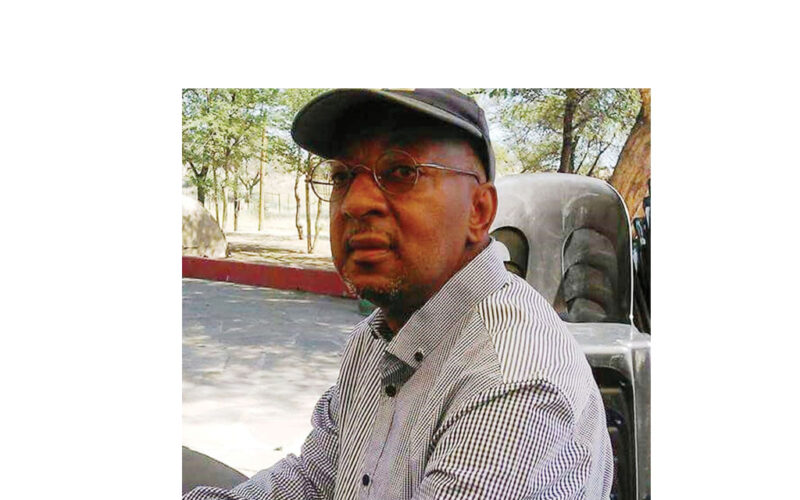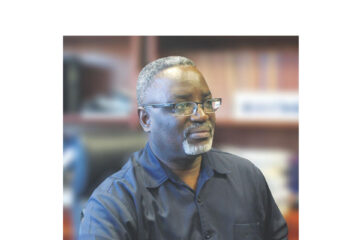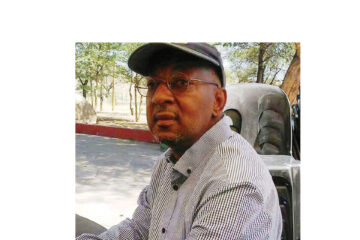Kae Matundu-Tjiparuro
WHO? Of all people, who is likely to give this son of the African soil and internationalist’s rich revolutionary and intellectual credentials the credit it deserves?
Yours Truly Ideologically could not but muse and at the same time lament upon the sad news of the passing on of Comrade Charles Kauraisa. As many of his contemporaries, and indeed true comrades-in-arms, have long gone. Jariretundu Kozonguizi, Che Ngaringombe, Moses Katjiuongua, Otniel Ndjoze, Rapata Tjivikua, Ambros Hijatjinguka Kandjii, and Tjatjitua Murangi, to mention but a few of them. Certainly the Angeline Kozonguizis, Rebecca Katjiuonguas, and Ida Virua Pakarae-Kandjous may still be around. But in this hour of what would resemble a tsunami to them, compounded by their own frailty, are they and would they be able to master the necessary energy and courage and rise to the occasion? As much as they say, cometh the hour, cometh the woman and/or man.
Since what seems like his sudden passing on last Sunday, indeed tributary messages and news have been trickling in in the mainstream and social media. But sadly not so much regarding his revolutionary credentials and intellectual proclivities and prowess. But more as a politician, businessperson, and soccer lover-cum-administrator, as well as the affable and sociable person that he was. Surely revolutionary salutations shall maybe be coming. For Comrade Charles was more than just a sports-lover-cum-administrator and/or businessperson, as he has hitherto been depicted. First and foremost he was a freedom fighter, and a revolutionary one for that matter. Not to mention being intellectually par excellence. Whose radical legacy goes back to a revolutionary movement like Swanu. Rooted in the resistance and demolition of apartheid and the establishment of a socialist society. The apartheid regime at one point condemned him to internal exile in Walvis Bay. The only place he was allowed to teach by the South African apartheid regime. Having been banned from teaching at any of the only high schools for his kind, a black, the Augustineum Secondary School and Rehoboth Secondary School. All because of his anti-apartheid activism.
This was after rubbing shoulders with the likes of I.B. Tabata and Ronnie Britton, whom, as Kauraisa himself revealed in a 1995 interview with Tor Sälström, exposed him and others to Marxism while in South Africa for his secondary and college education.
The year 1978 is still vivid in my ageing memory. In fact, never to be erased. Especially what seemed an eventful Saturday morning when I and fellow learners like Kenapeta Willybardt Kauaria and Verikomba Hiskia Mbahuurua, we temporarily ventured out as long-distance marathon runners. Covering the distance from the Augustineum Secondary School, where it is currently situated in Windhoek’s Khomasdal residential area, to Katutura. To be able to join the rest of the Swanu cadres for a heroes/heroines welcome of the much-talked-about, if not revered and revolutionary-worshipped, at least in Swanu circles, if not by the entire Namibian revolutionary fraternity, cadres from exile. Amongst them was Comrade Kauraisa.
The same year also occasioned a near-explosive and tense epoch in Namibian political history with the assassination of Ovaherero Paramount Chief Clemense Kapuuo. Whose assailants, to this day, are not known. Edging and driving the country to the precipice of actually a political civil war, but that was being instigated by apartheid colonial architects in Namibia as a civil war.
A year or two before, 1976 to be exact, the UN Security Council had unanimously adopted Resolution 385, which called Apartheid South Africa to take the necessary steps to transfer power to the people of Namibia and allow free elections. This raised the hopes of many Namibian exiles, particularly the Swanu cadres,that the Namibian freedom and independence was ultimately in sight.
More so, in view of the fact that Swanu’s own armed revolution aspirations was dashed by Swapo’s reluctance and aversion to facilitating Swanu’s trained cadres’ infiltration into Namibia to launch an armed struggle of their own from within. Thereby buttressing Swapo’s and/or the Peoples Liberation Army of Namibia (PLAN’’s) envisaged armed struggle.
Yes, for those who may be not aware Swanu had trained cadres who were trained in Egypt. Among the living ones being Katjimuina Veii, brother to late Gerson Hitjevi Veii and Kaserandu Israel Kaunatjike, now living in Berlin in Germany and Joseph Murangi (low living in Norway). Not to forget woman cadres like Rebecca Katjiuongua, Virua Pakarae-Kandjou and Angeline Kozonguizi where trained in China. As Kaunatjike himself testifies, they went from Dar es Salaam in Tanzania for military and/or insurgency training in Zamalek in Cairo in Egypt . This was under the Swanu Presidency of Jariretundu Kozonguizi with Kauraisa as Secretary for Positive Action. A feat masterminded by the Swanu External Council.
But the Swanu trained cadres never engaged in combat due to the reluctance of Swapo to facilitate their infiltration into the country. “Although we had people trained in guerilla warfare for the purpose of infiltrating the country and eventually commence the armed struggle, the OAU Liberation Committee had a different agenda. …Subsequently, we had discussions with our colleagues in Swapo, who embarked on the armed struggle with PLAN, but those discussions led nowhere and Swanu never took part in the armed struggle,” Kauraisa shared with Sällström. Thus, Kauraisa and some fellow Swanu cadres would return to Namibia for a short period in 1978 to “test the so-called amnesty declaration which South Africa had given us through the United Nations, whereby we were assured that we would not be arrested,” Kauraisa informed Sällström in his 1995 interview with him.
The 1978 return of Kauraisa and fellows to Namibia surely must have been informed by the cul de sac as far as the armed struggle was concerned given the ill-disposition of both the OAU Liberation Committee to support another armed struggle parallel to that of Swapo and PLAN. As well as the expectation of the imminent implementation of UN Resolution 435 but which was delayed for another ten years from 1979 when it was expected to be implemented to only 1989.
With the Swanu armed struggle ambitions grounded, and its External Council, set up in Sweden on 1965 and of which Kauraisa was at one point Chairperson and Foreign Affairs Secretary, dissolved, Swanu, Kauraisa and fellows were literally presented with a dilemma for a good ten years. As it was still Aluta Continua. But they continued on home turf mobilising against internal mechnisations by the South African Apartheid regime hell bent on internal political manoevres such as the Transitional Government of National Unity (TGNU). During which the Administrator General (AG) effectively continued in charge with various laws. Among them some under which political repression, harassment and arrests were applied. Under which then Imbu Uirab was arrested and detained in Uis. Kauraisa was then part of the Swanu leadership that travalled to Uis to protest his arrest spurred by the Youth League activism and agitation with the approval and/or instigation of Che Ngaringombe as Positive Action Secretary then.
Granted Charles Kauraisa is what he is and was and differently to many varied people. But in the context of the Namibian Revolution, he was a revolutionary and ideologue of socialist orientation grounded in the Marxist school of thought.




